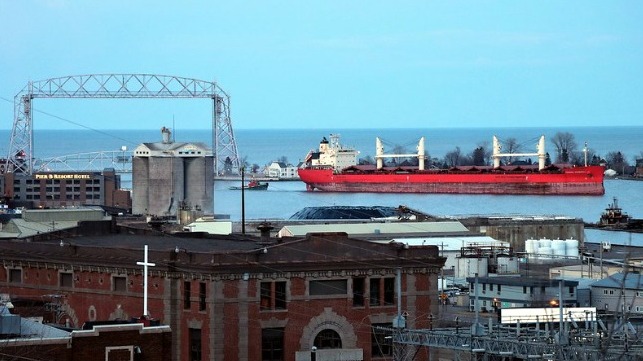Canadian and US Ports on St. Lawrence Seaway Mixed Seasonal Results

Accessed by the St. Lawrence Seaway, the Canadian and U.S. Great Lakes ports reported mixed results in June with strong shipments of gain, aluminum, road salt, and grain, but continuing decreases in commodities related to steel production and manufacturing. With strong results from Canadian exports in the region, the St. Lawrence Seaway reported a slight improvement in cargo shipment volumes in June, but volumes were down for the overall second quarter.
“American ports and the Seaway have benefited from worldwide demand for grain for food staples, continuing shipments of road salt and Canadian aluminum and general cargo like wind turbine components,” said Bruce Burrows, President and CEO of the Chamber of Marine Commerce, an association that represents the marine interests in the area.
Providing important access for the ports of America’s heathland, the Seaway reported that nearly 12 million metric tons of cargo was shipped along the route from the ports of the U.S. and Canada. That represented an eight percent decline versus 2019 volumes.
The individual ports, however experienced vary levels of traffic during the period. The Port of Milwaukee, experienced increasing shipments of grain and consistent movement of other commodities such as road salt and cement contributing to an overall two percent increase in volume. Similarly, the Port of Green Bay, Wisconsin saw a similar level of increase in June with salt and limestone shipments and imports of petroleum products.
In the state of Ohio, however, the ports reported declines in volume. The Port of Toledo saw its tonnage decline about 15 percent mostly due to coal and dry bulk with general cargo shipments more than doubled due to aluminum shipments. The Port of Cleveland, however, experienced a decrease in cargo volumes through the month of June at its general cargo and bulk terminals attributed to the COVID-19 pandemic and its impact on various industries that rely on steel and manufactured goods.
Gain shipments at the Port of Duluth-Superior are tracking nearly 22 percent ahead of the five-season tonnage average, along with increases in cola and limestone volumes, but the port’s tonnage leader, iron ore, slipped 10 percent. As a result, the port’s total tonnage for the season is down 29 percent compared to 2019.
The Canadian ports served by the St. Lawrence Seaway, including Thunder Bay, Windsor, Hamilton-Oshawa and Johnstown benefits from strong growth in Canadian grain exports which in total were up more than 11 percent over 2019.
“Canadian grain exports through our trade corridor accelerated in June but we also saw improvements in shipments of construction materials such as stone, cement and gypsum as COVID-19 restrictions continue to be lifted,” said Terence Bowles President and CEO of The St. Lawrence Seaway Management Corporation. “That being said, steep declines in shipments of steel-making materials and petroleum products remain, reflecting the challenges faced by the manufacturing and energy sectors. There is still a way to go for recovery.”
